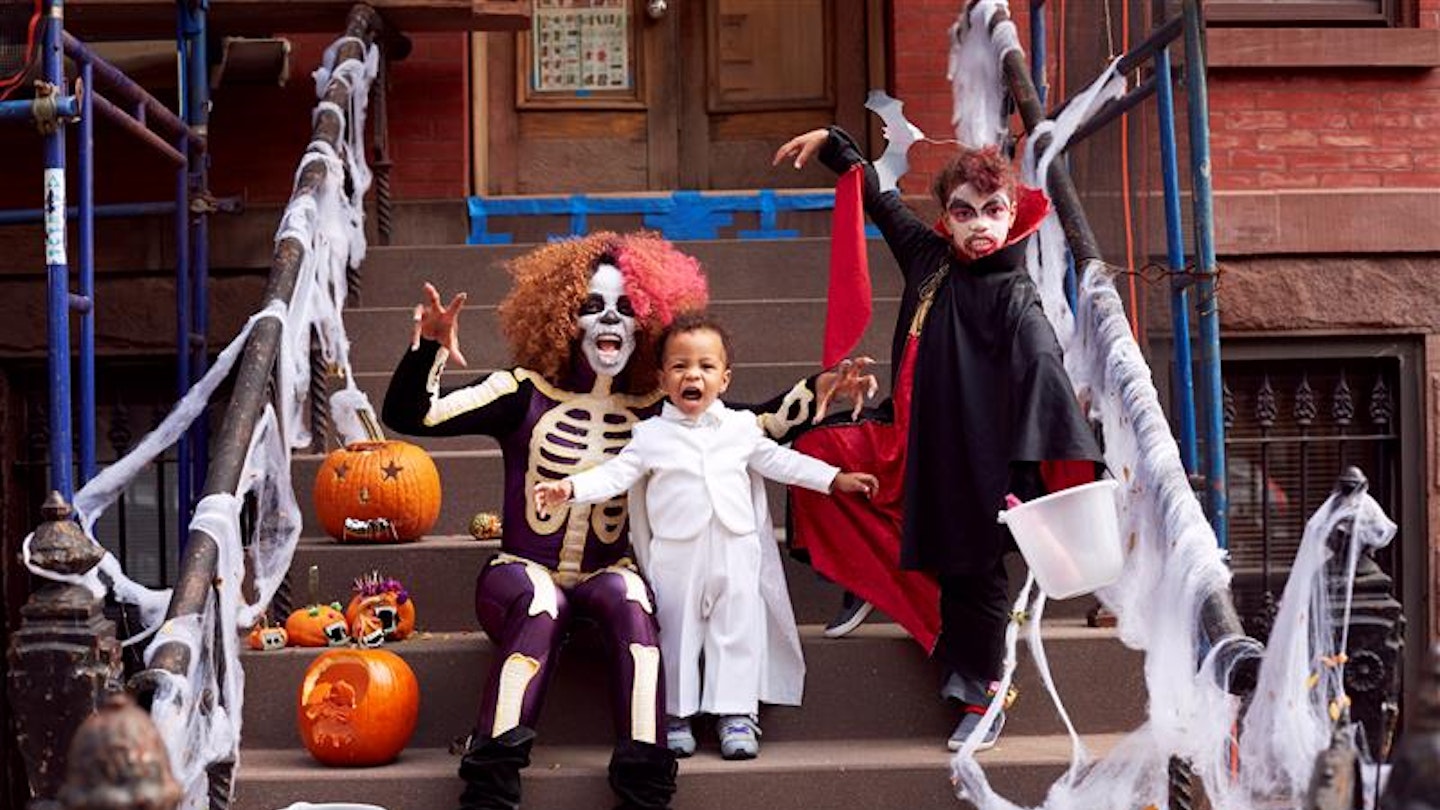You might have the cute costumes ready to go, pumpkins to carve and a metric tonne of Haribo on standby, but just as we started to plan a traditional Halloween, the Covid scare-a-thon has developed another new plot twist.
With rising numbers and hospital admissions plus ominous announcements coming from Westminster, some parents are pausing to consider how or even if they should mark Halloween this weekend.
Following last year’s socially distanced Halloween, which involved councils up and down the country advising parents to keep their little ghouls at home and observe things virtually, 2021 looked set to be different. But recent headlines have some of us re-considering what we are doing.
With some Covid-proofing, here’s a guide to how we can still let our children take part and trick or treat responsibly, without every single Halloween tradition going up in a puff of smoke
Socially-distanced sweets
Dr Sarah Brewer, Medical Director at Healthspan suggests a re-think when it comes to traditional trick or treating. Instead of thrusting a bucket of sugary treats at callers, consider having a container of sweets outside your house for passing trick or treaters. ‘Socially distant sweet-giving would certainly be advisable,’ says Dr Brewer. ‘Place packets of treats outside for children to find, for example. And if you are answering the door to give out candy, wear a mask.’
You could also stick a sign up beside your pumpkins asking kids to help themselves and for an added safety measure, ensure your basket of goodies are individually wrapped.
Follow the pumpkins
Before your children charge up every garden path in the neighbourhood it could be worth hanging back and respecting the signal of Halloween decorations or a pumpkin on display. Dr Brewer says, ‘Ideally, contact elderly neighbours in advance to see whether or not they would like you to call around. Only call at houses with lit pumpkins or other invitational signs that they are taking part in Halloween this year. People who feel vulnerable will not want strangers knocking at their door. And don’t let your children step inside someone’s house.’
Al fresco Halloween
Perhaps you had a Halloween party planned. While gatherings aren’t forbidden, could you re-create your spooktacular event outside and allow a bit more distance between guests? As Dr Brewer reminds us, ‘Staying outdoors helps to reduce transmission of viruses compared with being indoors. Wearing a mask will further help to reduce transmission. If you are trick or treating, take hand sanitiser and use after each call and kids should wash their hands before eating their candy.’ Incorporating gloves into your children’s costumes could be helpful too, to stop them delving into their Halloween bounty before they get home for a thorough hand wash.
Keep it exclusive
You may have been planning to go trick or treating en masse, with a hoard of excited little terrors ready to spook the neighbourhood, but Dr Brewer recommends limiting the guestlist: ‘Follow any local advice about social distancing and mask wearing. Avoid crowds and, ideally, go around in a family group.’ Older children may be vaccinated but discussing how they plan to trick or treat is wise, suggesting they keep their numbers to a minimum.
Embrace the masks
Whether you’re intending on dressing up as a scary clown, superhero or a ghost, wearing a mask is a no-brainer according to Dr Brewer – giving trick or treaters, and their parents – an extra barrier against any virus: ‘Costumes incorporating masks are definitely a wise move, but ensure the mask is one that is designed to protect against viral transmission – not just a fancy-dress mask. Wear a proper café mask underneath a costume mask, for example – but ensure your child can breathe comfortably.’
Trick, treat and test
Costumes? Hand sanitiser? Buckets for collecting their sugary haul? Check, check and check. You might also want to add a pre-trick or treating lateral flow test to the list, as Dr Brewer suggests: ‘Anyone with symptoms of illness should stay at home. It would also be wise for all those taking part to do a lateral flow test beforehand.’
